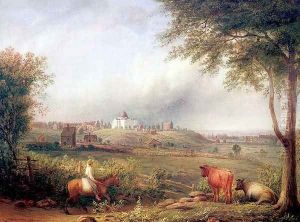William Douglas MacLeod Paintings
William Douglas MacLeod was a Scottish artist known for his landscape and marine paintings. Born on October 23, 1892, in Glasgow, MacLeod's talent in art was evident from a young age. He received his formal education at the Glasgow School of Art, one of the leading art institutions in Europe, where he developed his skills and was influenced by the Scottish Colourists and the broader European movements such as Impressionism.
During the early part of the 20th century, MacLeod's work started to gain recognition. His style was characterized by a vibrant use of color and a loose, expressive brushwork, which captured the atmosphere of the Scottish countryside and coastlines with a particular sensitivity to light and mood.
MacLeod's career was interrupted by the First World War, during which he served with distinction. After the war, he returned to painting and began exhibiting his work more widely, including at the Royal Scottish Academy, the Royal Glasgow Institute of the Fine Arts, and other prominent venues.
Throughout the 1920s and 1930s, MacLeod continued to develop his artistic practice, experimenting with various subjects and refining his approach to color and composition. He often painted en plein air, working directly from nature, which allowed him to capture the transient effects of light on the landscape.
In addition to landscapes, MacLeod was also known for his marine scenes, which showed a similar sensitivity to the natural environment, depicting the changing sea and sky with a dynamic and emotive palette. His works have been appreciated for their ability to evoke the unique character and atmosphere of the Scottish scenery.
During his lifetime, MacLeod's paintings were well received, and he maintained a successful career as an artist. He was also an active member of the artistic community in Scotland, contributing to the development and appreciation of Scottish art.
William Douglas MacLeod passed away on February 24, 1963. His legacy lives on through his paintings, which continue to be admired for their lively and atmospheric portrayal of Scotland's landscapes and seascapes. His works are held in various collections and are occasionally displayed in exhibitions dedicated to Scottish art and its history.
